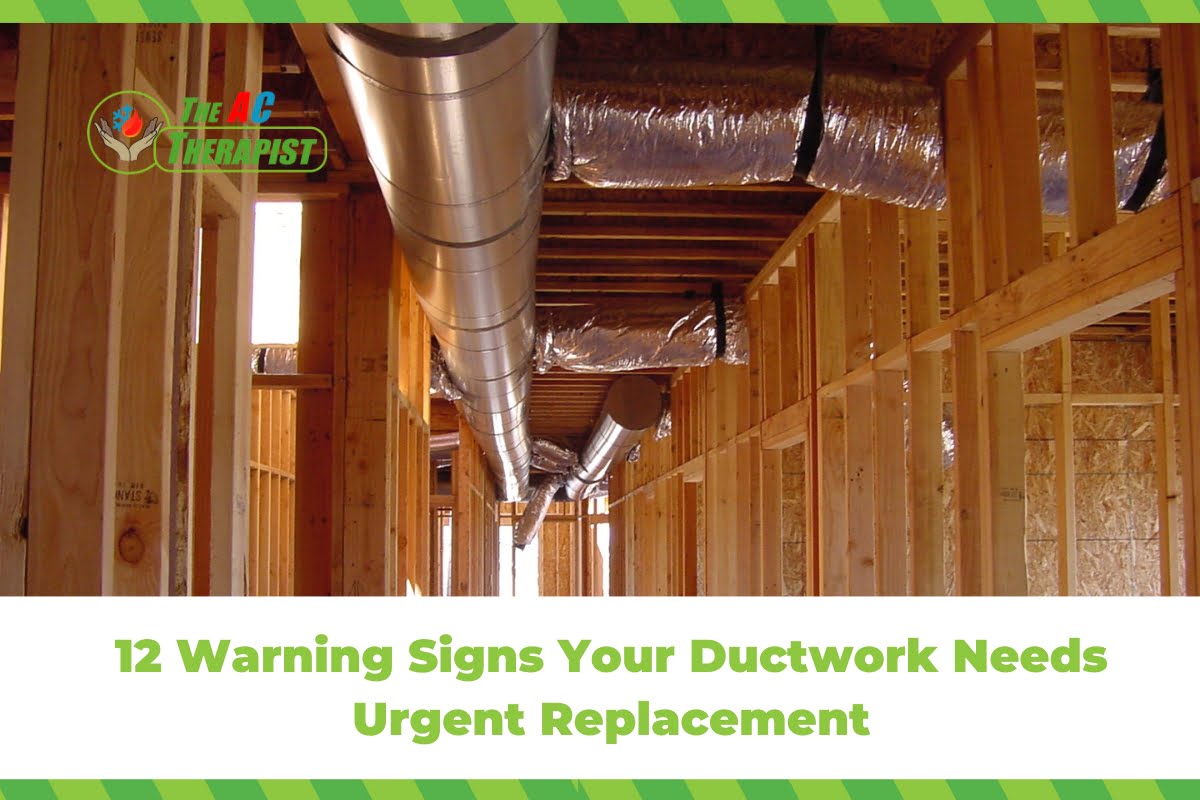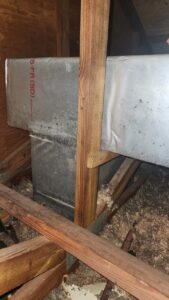12 Warning Signs Your Ductwork Needs Urgent Replacement
Begin with an engaging introduction about the importance of ductwork in maintaining indoor air quality and efficient heating and cooling. Briefly mention how well-maintained ductwork is crucial for comfort, health, and energy efficiency in homes.
Understanding Ductwork: The Essential Guide for Homeowners
Ductwork is a vital component of your home’s heating, ventilation, and air conditioning (HVAC) system. It serves as the respiratory system of your house, distributing air from your HVAC unit to various rooms. Understanding how ductwork operates, its types, common issues, and maintenance can significantly enhance your home’s comfort and energy efficiency.
1. What is Ductwork? Ductwork refers to the network of tubes that transport heated or cooled air from your HVAC system throughout your home. Typically made from materials like sheet metal, fiberglass, or flexible plastic and wire composite, ducts are designed to ensure a consistent indoor temperature and air quality.
2. Types of Ductwork:
Each type of ductwork has its advantages and disadvantages, depending on the specific requirements of the HVAC system, the environmental conditions, and the budget. When selecting ductwork, it’s important to consider factors such as durability, cost, efficiency, and suitability for the specific heating, ventilation, and air conditioning needs of the space.
- Sheet Metal Ducts:
- Material: Typically made from galvanized steel or aluminum.
- Features: They are durable and less likely to have mold growth due to their non-porous surface.
- Varieties: Available in both rectangular and round shapes.
- Usage: Commonly used in commercial applications, but also suitable for residential systems.
- Fiberglass Lined Ducts:
- Material: These are sheet metal ducts lined with fiberglass on the inside.
- Features: The fiberglass lining insulates the ducts and reduces the noise of the air flowing through them.
- Considerations: Over time, the fiberglass can deteriorate and release fibers into the air stream, which may raise indoor air quality concerns.
- Flexible Ducts:
- Material: Made from a flexible plastic over a metal wire coil.
- Features: Easy to install and can be maneuvered around obstacles.
- Usage: Often used in residential applications, especially in spaces where rigid ducts are impractical.
- Considerations: They need to be properly supported and installed to avoid sagging or kinking, which can reduce efficiency.
- Fiberboard Ducts:
- Material: Constructed from fiberglass strands bonded with resin and covered with a foil laminate for moisture protection.
- Features: They provide good thermal insulation and sound absorption.
- Usage: Common in residential applications.
- Considerations: They have a rough interior surface that can impact airflow and may accumulate dust and other particles more readily than smooth ducts.
- Ductwork Insulation:
- Purpose: Insulation is crucial for maintaining temperature control and efficiency.
- Types: Common insulation materials include fiberglass, foam board, and reflective insulation.
- Placement: Insulation can be external or internal, depending on the duct type and application.
- Fabric Ducts:
- Material: Made of special polyester materials.
- Features: Often used for even air distribution and are customizable for specific spaces.
- Usage: Common in industrial and commercial settings, particularly where aesthetics are a concern.
3. Design and Layout: The design of ductwork is crucial for efficient airflow. It includes supply ducts that deliver conditioned air into rooms and return ducts that bring air back to the HVAC unit for reconditioning. Proper sizing and layout, considering the home’s size and layout, are essential for optimal performance.
4. Common Issues with Ductwork:
- Leaks and Tears: These can lead to significant energy loss and reduced system efficiency.
- Poor Insulation: Inadequately insulated ducts can lose heat, increasing energy costs.
- Dust and Mold Accumulation: Over time, ducts can accumulate dust and mold, affecting air quality.
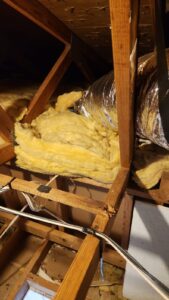
Signs That It’s Time to Replace the Ductwork in Your Home
When it comes to maintaining a comfortable and healthy home environment, understanding the signs that indicate the need for ductwork replacement is crucial. Here’s an in-depth look at each of these signs:
- Age of the Ductwork:
- One of the primary signs that your ductwork may need replacing is its age. Typically, ductwork lasts between 15 to 20 years. As it ages, the material can become brittle, leading to cracks and leaks. If your home’s ductwork is approaching or has surpassed this age range, it’s a clear sign that you should consider an inspection and possibly a replacement.
- Rising Energy Bills:
- An unexplained increase in energy bills is a significant sign of inefficient ductwork. Leaks or holes in the ducts can cause heated or cooled air to escape, forcing your HVAC system to work harder and use more energy to maintain the desired temperature. This inefficiency is a clear sign that your ductwork may need attention.
- Inconsistent Temperatures:
- If you notice uneven heating or cooling in different rooms, it’s a sign that your ductwork may not be distributing air properly. This inconsistency can be due to leaks, blockages, or poor duct design. It’s a sign that your ductwork system might require a professional evaluation.
- Visible Damage:
- Physical signs of damage such as dents, punctures, or rust on your ductwork are obvious signs of deterioration. Additionally, if you notice sections of your ductwork hanging or not properly aligned, these are signs that the integrity of the system has been compromised.
- Poor Indoor Air Quality:
- An increase in dust, allergens, or strange odors in your home can be signs of ductwork issues. Leaky ducts can draw in and circulate pollutants and allergens from unconditioned spaces. These signs often indicate that your ductwork system is not functioning as it should.
- Noisy HVAC Operation:
- Strange noises like rattling, whistling, or banging from your ductwork are signs of problems. These sounds can be signs of loose ductwork, holes, or other issues that may require a replacement.
- Frequent HVAC Repairs:
- If you find yourself repeatedly addressing HVAC issues, it’s a sign that your ductwork may be contributing to the problem. Frequent repairs can be a sign of an aging system that would benefit more from replacement than ongoing repairs.
- Mold and Mildew Presence:
- The presence of mold or mildew around your ductwork is a serious sign of concern. This can be a sign of excessive moisture due to leaks or condensation within the ducts. Mold and mildew can pose health risks and are signs that your ductwork needs urgent attention.
- Excessive Dust:
- An unusual amount of dust accumulating in your home shortly after cleaning is a sign of ductwork issues. This can be a sign that dust and debris are being circulated through your home due to leaks or holes in the ductwork.
- High Humidity Levels:
- Experiencing higher-than-normal humidity levels inside your home can be a sign of ductwork problems. Properly sealed and insulated ducts are crucial in maintaining consistent humidity levels. This sign can indicate that your ductwork is not functioning correctly.
- Carbon Monoxide Concerns:
- For homes with combustion appliances, any sign of carbon monoxide in your home is a critical sign. Faulty ductwork can lead to improper ventilation and the potential for dangerous carbon monoxide levels. This is a sign that should never be ignored and requires immediate professional attention.
- Difficulty in Maintaining Comfort:
- If your HVAC system struggles to maintain the set temperature, it’s a sign of ductwork inefficiency. This difficulty is a sign that your ducts may not be effectively distributing air throughout your home.
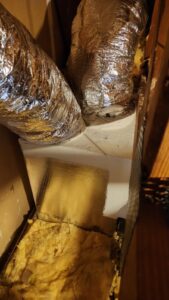
Why it is necessary to replace the ductwork?
Replacing ductwork in your home is necessary for several key reasons, all of which contribute to the overall efficiency, safety, and comfort of your living environment:
- Energy Efficiency: Old or damaged ductwork can lead to significant energy loss. Leaks or holes in the ducts allow conditioned air to escape, forcing your HVAC system to work harder to maintain the desired temperature. This inefficiency leads to higher energy bills and increased wear on your HVAC system.
- Indoor Air Quality: Compromised ductwork can adversely affect the air quality in your home. Leaks in the ducts can draw in dust, allergens, and pollutants from unconditioned spaces like attics or crawl spaces, circulating them throughout your home. This can exacerbate allergies and respiratory issues.
- Comfort: Properly functioning ductwork is essential for evenly distributing air throughout your home. If your ducts are damaged or poorly designed, it can lead to inconsistent temperatures, with some rooms being too hot or too cold, reducing overall comfort.
- Safety: Damaged ductwork, especially in systems that use gas appliances, can pose a safety risk. Leaks in the ducts can potentially lead to a backdraft of combustion gases like carbon monoxide being drawn back into the home instead of being vented outside.
- Humidity Control: Efficient ductwork helps maintain consistent humidity levels in your home. Leaky or uninsulated ducts can lead to excess humidity, which can foster mold growth and damage building materials.
- System Longevity: When your HVAC system doesn’t have to work as hard to heat or cool your home, it can reduce wear and tear on the system, extending its lifespan and reducing the likelihood of costly repairs or replacements.
- Compliance with Current Standards: Over time, building codes and standards evolve. Replacing old ductwork can ensure your system complies with current energy efficiency and safety standards.
- Enhanced Resale Value: Up-to-date and efficient HVAC systems, including ductwork, can be a selling point if you decide to put your home on the market, potentially increasing its value and appeal to buyers.
Consequences of not replacing ductwork
Neglecting the signs that indicate the need for ductwork replacement can lead to a range of consequences. Understanding these signs and the potential repercussions of ignoring them is crucial for maintaining a healthy, efficient, and comfortable home environment. Here’s a detailed look at each of these signs and their associated consequences:
- Increased Energy Costs:
- One of the most noticeable signs of aging or damaged ductwork is a significant increase in energy bills. Ignoring this sign means your HVAC system has to work harder to compensate for lost air through leaks or poor insulation, leading to higher energy consumption and costs.
- Poor Indoor Air Quality:
- Ignoring signs of deteriorating ductwork, such as increased dust or musty odors, can lead to poor indoor air quality. Leaky ducts can introduce and circulate pollutants, allergens, and even mold spores throughout your home, potentially causing health issues for the inhabitants.
- Inconsistent Heating and Cooling:
- If you overlook signs of inconsistent temperatures in your home, it can lead to discomfort and frustration. Damaged or leaky ductwork fails to distribute air evenly, resulting in hot or cold spots in different areas of the house.
- Increased Wear and Tear on HVAC System:
- Ignoring signs that your ductwork needs replacement puts additional strain on your HVAC system. This can lead to more frequent breakdowns and potentially shorten the lifespan of your HVAC equipment, necessitating costly repairs or replacements.
- Compromised Home Safety:
- One crucial sign not to ignore is the presence of mold or mildew around ductwork. This can indicate moisture issues within the ducts, which not only affects air quality but can also lead to structural damage if left unaddressed.
- Decreased Comfort:
- Comfort in your home can be significantly compromised if signs of failing ductwork are ignored. Issues like drafts, fluctuating temperatures, and excessive humidity can make your living environment less comfortable.
- Higher Humidity Levels:
- Overlooking signs of high humidity levels in your home can lead to discomfort and contribute to mold growth. Damaged ductwork can fail to properly dehumidify air, leading to a damp and musty home environment.
- Potential Health Risks:
- Ignoring signs of poor air quality and mold growth can pose serious health risks, especially for individuals with allergies, asthma, or other respiratory conditions. Continuous exposure to poor air quality can lead to long-term health issues.
- Reduced Resale Value of Home:
- If you’re planning to sell your home, ignoring signs of outdated or damaged ductwork can be a detriment. Prospective buyers are likely to be put off by the increased energy costs and potential air quality issues, reducing the resale value of your home.
- Environmental Impact:
- Not addressing signs of inefficient ductwork contributes to higher energy usage, which has a broader impact on the environment. Energy inefficiency leads to higher carbon emissions, contributing to environmental degradation.
Why replace and not repair?
Choosing between replacing and repairing ductwork is a decision that hinges on several factors. While repair might be a suitable option in some cases, there are circumstances where replacement is the more prudent choice. Here’s why replacing, rather than repairing, might be necessary:
- The extent of Damage:
- If the ductwork in your home has extensive damage, such as large sections of corrosion, numerous leaks, or widespread mold, repair might not be sufficient. In such cases, the cumulative cost and effort of repairs could exceed the cost of installing new, more efficient ductwork.
- Age of the Ductwork:
- The age of your ductwork is a critical factor. If your ductwork is old, it might not meet current efficiency standards. Older ducts are more prone to issues and may not be compatible with modern HVAC systems. In such cases, replacement ensures compatibility and efficiency.
- Energy Efficiency:
- Modern ductwork is designed with energy efficiency in mind. If your current system is outdated, it may be inherently less efficient, leading to higher energy bills. Replacing old ductwork with newer, more energy-efficient materials can save energy.
- Health and Air Quality Concerns:
- Over time, ducts can accumulate dust, allergens, and even mold. While cleaning can sometimes address these issues, in severe cases (especially with mold), replacement is the safer option to ensure healthy indoor air quality.
- Changes in HVAC System:
- If you’re upgrading your HVAC system, your existing ductwork might not be adequate for the new system’s requirements. Replacing the ductwork can ensure it is properly sized and designed to work efficiently with the new system.
- Cost-Effectiveness in the Long Run:
- Frequent repairs can be more costly over time. If you find yourself constantly fixing your ductwork, it might be more economical in the long run to invest in new ductwork rather than continually paying for repairs.
- Improved Comfort:
- New ductwork can significantly improve comfort levels in your home. It can eliminate issues like uneven heating or cooling, reduce noise from the HVAC system, and maintain consistent humidity levels.
- Home Renovations:
- If you are renovating your home, particularly if you are changing the layout or adding new spaces, your existing ductwork may no longer be suitable. Replacing the ductwork during renovations can ensure that it is optimized for the new layout of your home.
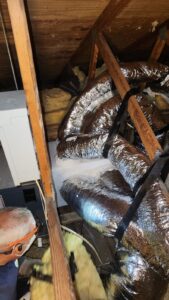
Expert Advice from The AC Therapist”
As we have explored in this comprehensive guide, being aware of the 12 critical warning signs that your ductwork needs urgent replacement is essential for maintaining a healthy, efficient, and comfortable home environment. These signs, ranging from rising energy bills and inconsistent temperatures to visible damage and poor indoor air quality, are not just indicators of a failing HVAC system; they are alerts to potential health risks, increased financial costs, and decreased home comfort.
Ignoring these signs can lead to a cascade of problems, including exacerbated allergies due to poor air quality, heightened energy consumption leading to soaring bills, and an overworked HVAC system prone to frequent breakdowns. Moreover, issues like mold growth and excessive dust accumulation can significantly impact your family’s health and well-being.
This is where the expertise of The AC Therapist becomes invaluable. As a seasoned professional in HVAC systems, The AC Therapist understands the intricacies of ductwork health. They don’t just offer a temporary fix but provide comprehensive solutions that address the root cause of the problem, ensuring long-term efficiency and reliability.
By choosing The AC Therapist for your ductwork inspection and replacement needs, you’re not just getting a service provider; you’re gaining a partner who prioritizes your comfort and safety. Their team of skilled technicians is equipped with the latest tools and knowledge to accurately diagnose and resolve any ductwork issues. Whether it’s a minor repair or a complete ductwork overhaul, you can trust The AC Therapist to deliver quality service that stands the test of time.
In addition to their technical expertise, The AC Therapist also offers exceptional customer service. They understand that every home is unique and requires a personalized approach. They take the time to listen to your concerns, conduct thorough inspections, and provide tailored recommendations that best suit your specific needs and budget.
So, if you notice any of the warning signs discussed in this blog, don’t delay. Taking prompt action can save you from more significant expenses and disruptions in the future. Reach out to The AC Therapist, your trusted local HVAC contractor in the Tampa Bay area, for a professional assessment. With their commitment to excellence and customer satisfaction, you can rest assured that your home’s ductwork and overall HVAC system are in capable hands. Contact The AC Therapist today, and take the first step towards a more comfortable, efficient, and healthy home environment.

